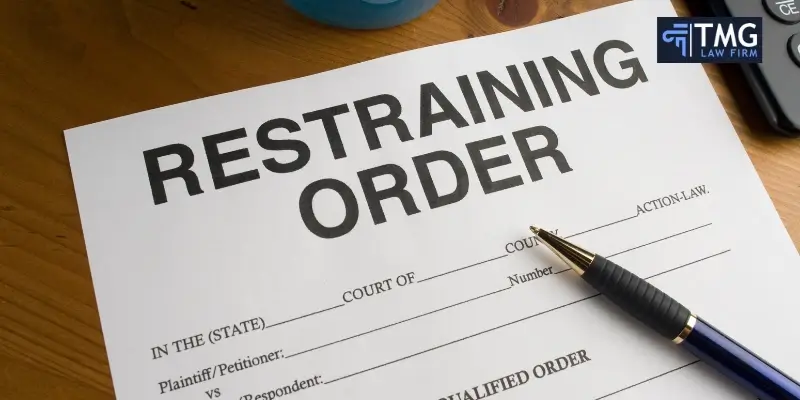How To Get a Domestic Violence Restraining Order in California?

Domestic violence doesn’t just happen behind closed doors. It’s a tragic event that happens every day in communities across California. In fact, 1 in 5 women and 1 in 7 men report that they have experienced serious physical violence from their partner in their lifetime. Due to how prevalent this issue can be, it’s important to understand how to get a domestic violence restraining order in California if this were to happen to you or someone you know.
Understanding Domestic Violence and Who Can Seek Protection
Many are surprised to learn that domestic violence is more than just physical acts of harm. California defines it much more broadly to include emotional abuse, threats, stalking, harassment, and even instances of controlling behavior that crosses the line. As such, the state allows you to request a restraining order if the abuse is from someone you have a close relationship with.
This can include:
- A current or former spouse or romantic partner
- Someone you live with or have lived with
- The other parent of your child
- A close family member, such as a parent, sibling, or in-law
When you look into the statistics, the reality becomes stark. In places like Ventura County alone, there have been approximately 7,000 allegations of domestic violence reported annually. This single local figure highlights just how widespread the issue can be, even in a smaller population. Regardless of what type of threat of violence you are facing, the law is here to protect you.
How to File for a Domestic Violence Restraining Order
Many people feel overwhelmed when trying to figure out how to file a restraining order against someone else. This can be particularly difficult to manage if you are still in the midst of an abusive situation. Fortunately, California does have a solid system in place to streamline the process.
First, you will need to complete the required court forms. These include:
- Form DV-100: Request for Domestic Violence Restraining Order
- Form DV-109: Notice of Court Hearing
- Form DV-110: Temporary Restraining Order
Each of these forms will ask for more details about your relationship with the abuser, what type of abuse you have been experiencing, and the kind of protection you are looking for.
File the Forms With the Court Clerk
When ready, bring your completed forms to the superior court in your county. This is often the family law division. There are no filing fees required for domestic violence restraining order applications. The court staff will stamp your documents and may set a hearing date for that same day, depending on the court’s schedule.
Request a Temporary Restraining Order
In urgent scenarios, you can ask the judge to issue a temporary restraining order. This can provide immediate protection that will remain in effect until your court hearing is over.
Serve the Alleged Abuser
The restrained person must be “served” a copy of the filed forms and be notified when the hearing will take place. This is not to be done by the person who filed the forms, but rather by an attorney or someone else who works for the state and is over the age of 18.
Attend the Court Hearing
When the hearing is taking place, you will have the opportunity to present evidence and explain why a permanent order is necessary for this situation. At this point, the judge may ask follow-up questions and give the abuser a chance to share their side of the story. This is a critical component of the process, as everyone has the chance to defend themself, even when the evidence is extremely compelling.
FAQs
How Hard Is It to Get a Domestic Violence Restraining Order in California?
The process to successfully obtain a restraining order in California is relatively simple. The state makes the process accessible to help those who are in danger and might not have much time to make the effort. The court prioritizes safety, so judges often issue temporary restraining orders the same day a request is filed to help. However, the process can be emotionally difficult, especially when it comes to confronting an abuser in court. This is important to anticipate.
What Evidence Is Needed for a Restraining Order?
The specific type of evidence needed will depend on each case. This can include a combination of text messages, emails, voicemails, photographs of your injuries, police and medical reports, and witness statements. Even if you don’t have access to any physical evidence, your sworn testimony about the abuse can still be enough for a judge to issue a restraining order if you don’t feel safe. Always connect with an experienced domestic violence attorney to help secure this protection.
How Much Does It Cost to Get a Restraining Order in California?
There is no cost to file for a domestic violence restraining order in California. The court graciously waives all of these fees in the interest of keeping victims safe and protected so they can move forward with their lives as their cases are pending. If your case needs to advance to court, you will need to factor in attorney fees to help support the process. Be sure to ask your attorney about costs upfront to ensure you properly budget for their services.
What Should I Do If Someone Violates Their Restraining Order?
If the restrained person violates any part of a court-issued order, it’s important you contact law enforcement right away. Even if what they did seems minor, like sending a text or showing up unexpectedly, you don’t want to grant them any wiggle room. Penalties for this violation may lead to criminal charges or an arrest. Keep as much evidence as you can about the violation, such as call logs, text messages, or photos of the person on your property.
Contact TMG Law Firm Today
If you need legal support to enforce a restraining order or defend against allegations, contact our firm today. We are well-versed in domestic violence laws in California and are able to step in and ensure no one tries to take advantage of your rights in the process.


